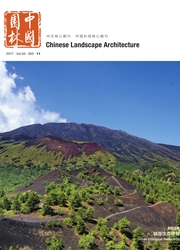

 中文摘要:
中文摘要:
在西方文明强势的当代,基于传统山水审美的名山风景区审美价值识别研究是中国美学研究的基础性工作.它既是我国名山风景区审美价值保护问题的内在需求,也是弥补国际组织在遗产地审美评价中长期缺乏中国视角的外在需求.立足于我国风景区、遗产地在西方审美评价标准下进行价值识别中的现实问题,继而挖掘了中国传统山水审美的4个特点,并以此提出了审美中主客体关系的认识视角.在此基础上阐释了传统山水审美生成模式、作用机制,提出了审美价值中主体差异性和历时性这2个重要属性,突破了理论界常规的主体差异性审美价值识别的单向性局限.在新的认识框架下,以黄山为例,相继阐释了历时性和主体差异性审美价值识别的过程及其结果.将新的审美价值识别框架下所识别出的审美价值,与世界遗产OUV和《风景名胜区规划规范》这2套体系下所识别的审美价值进行比较,以证实该审美价值识别框架的积极意义.最后阐释了该审美价值识别框架对于风景名胜研究和保护的积极意义.
 英文摘要:
英文摘要:
The aesthetic research of Chinese mountainous scenic sites based on traditional Chinese Shan-Shui, is a critical thinking andfundamental research to the body of knowledge of Chinese aesthetics. It will fulfill not only the national demand on the conservation ofChinese mountain scenic sites within China, but also the international demand on the creating a more comprehensive aesthetic evaluationassessment of World Heritage Sites from the Chinese perspective. The research was based on the realistic problems of Chinese scenicsites and world heritage sites concluded four characters of traditional aesthetics. The research continued to propose the recognitionaspects of the relationship between the aesthetic subject and object. Then, the research demonstrated the mechanism of Shan-Shuiaesthetic, and proposed the two main important aesthetic features: the differential objective feature and the diachronic feature to breakthe singleness aesthetic value identification in recent theoretical sphere. According to this new aesthetic framework, it represented theidentify results of these two feature by demonstrating an example of Mount Huangshan National park. The comparison of aestheticvalues differences was concluded between the OUV values of WHC and scenic values of coding of Chinese scenic can historical area,proving the benefits of the new aesthetic evaluation framework. Last but not least, the study stated the research contributions to the bodyof knowledge of aesthetic identification and conservation in China.
 同期刊论文项目
同期刊论文项目
 同项目期刊论文
同项目期刊论文
 期刊信息
期刊信息
